Results 3,651 to 3,660 of 12095
Thread: Anandtech News
-
02-21-14, 05:30 PM #3651
Anandtech: NVIDIA GeForce 334.89 WHQL Drivers Now Available
After the previous 332.21 WHQL drivers became a part of my 2014 test setup over a month ago, NVIDIA have quickly turned around a new set of WHQL drivers. Most of these directly impact the GPU titles I test with the GTX 770s, as well as provide support for the new GTX 750, GTX 750 Ti and GTX TITAN Black GPUs. Ryan reviewed the GTX 750 and GTX 750 Ti a few days ago, with them hitting the $120 and $150 price points, battling the R7 260X and R7 265 at those price points respectively.
Highlights of the new drivers include:
Performance Boosts for GTX 770/780/TITAN/780Ti
Up to 19% in F1 2013
Up to 18% in Sleeping Dogs
Up to 16% in Hitman Absolution
Up to 15% in Company of Heroes 2
Up to 10% in Assassin’s Creed 3
Up to 7% in BioShock Infinite
Up to 6% in Sniper Elite V2
Up to 5% in Total War: Rome 2
SLI Technology
Assassin’s Creed Liberation HD – created profile
Assassin’s Creed: Freedom Cry – created profile
Deus Ex: Human Revolution Director’s Cut – created profile
The Crew – created profile
Gaming Technology
Supports GeForce ShadowPlay™ technology
Supports GeForce ShadowPlay™ Twitch Streaming
SHIELD
Supports NVIDIA GameStream™ technology
3D Vision
Shadow Warrior – rating now “Excellent”
The Stanley Parable – rated “Excellent”
Walking Dead 2 – rated “Good”
World Rally Championship 4 – rated “Good”
LEGO Marvel Super Heroes – rated “Good”
Far Cry 3 Blood Dragon – rated “Fair”
The following issues have also been resolved:
- [Deus Ex Human Revolution - Director's Cut]: Low frame rate, frame drops, and stuttering occur in the game. FIXED
- [Half Life 2]: The games loses Ambient Occlusion momentarily while sprinting. FIXED
- [Google Chrome][3D Vision]: The browser opens in stereoscopic 3D anaglyph mode. FIXED
- [SLI][GeForce GTX 460]: There is no option, in the NVIDIA Control Panel, to enable SLI. FIXED
- [3-way SLI, Quad SLI][ShadowPlay 11.10.11.1]: NVIDIA ShadowPlay causes certain games to crash or lock up the system when launched. FIXED
- [Notebook][GeForce GT 730A][Rome 2: Total War]: The game does not run on the NVIDIA GPU. FIXED
- [Notebook][GeForce 9600M (GT)]: The LCD brightness cannot be adjusted. FIXED
- [3DTV][Notebook]: Full-screen 3D content may flicker when the external 3DTV is set as the primary display in extended mode and a Windows Store App is running in the background. FIXED
- [3DTV Play][Notebook]: For some of 3D Aegis DT displays with HDMI connectors, there was corruption in one eye for DirectX 9 applications or when running the 3D Stereo Setup Wizard. FIXED
- [War Thunder]: Displays flicker at the menu screen. FIXED
- [Call Of Duty: Ghosts]: “D3D device hung” errors occur when playing multi-player. FIXED
- [SLI][Fermi-based GPUs][Call of Duty: Ghosts]: Game models fail to render and the gun scope is transparent if SLI is enabled. FIXED
- [SLI]: System crashes while booting with a 144Hz refresh rate display connected. FIXED
- [SLI][Surround]: The maximum Surround resolution is reduced to 4320 x 900. FIXED
- [SLI][Final Fantasy XIV]: The game frame rate drops when switching from 4K@30 Hz to 4k@60 Hz with multi-stream transport (MST) enabled. FIXED
NVIDIA’s latest drivers can be downloaded here for Windows Vista/7/8/8.1 64-bit, or the download page is found here.
More...
-
-
02-23-14, 04:30 AM #3653
Anandtech: Samsung Announces Tizen-based Gear 2, Gear 2 Neo Smartwatches
This morning Samsung dropped some news ahead of its Unpacked 5 event with the announcement of a refresh of its smart watch lineup, the Gear 2 and Gear 2 Neo. We reviewed the original Android 4.2 based Samsung Galaxy Gear, which offered an interesting combination of unique features in the smartwatch category (a strap mounted camera, Android platform, and bluetooth calling capabilities), but found that battery life left a lot to be desired partly thanks to it running the entire platform on an Exynos 4212. The new Gear 2 drops the "Galaxy" prefix and Android with it, instead opting for Samsung's own Tizen platform. Samsung doesn't call out an SoC specifically, but the Gear 2 is based on a dual core platform with maximum clocks of 1.0 GHz – previously Galaxy Gear was based on the dual core 4212 platform but with one core disabled and a maximum frequency of 800 MHz. The Gear 2 and Gear 2 Neo appear to be primarily differentiated by the presence of a body-mounted camera, with the 2 Neo eschewing the camera and likely coming in at a lower price point.
The Gear 2 series adds some new functionality, including a heart rate sensor for health and fitness applications, IR led for controlling appliances with WatchOn, and the ability to change the wrist strap since the camera is now integrated into the body of the watch rather than on the strap.Galaxy Gear Gear 2 Gear 2 Neo Display 1.63 inch 320x320 SAMOLED 1.63 inch 320x320 SAMOLED SoC 800 MHz Exynos 4212 Dual Core Cortex A9 1 GHz "Dual Core" OS Android 4.2 Tizen Camera 2.0 MP w/AF 2.0 MP w/AF N/A Video 720p30 720p30 N/A Memory 4 GB + 512 MB RAM 4 GB + 512 MB RAM Dimensions 36.8 x 56.6 x 11.1 mm, 73.8 g 36.9 x 58.4x 10.0 mm, 68g 37.9 x 58.8 x 10.0mm, 55g Battery Li-ion 315 mAh Li-ion 300 mAh Connectivity BT 4.0 Bluetooth 4.0, IrLED Sensors Accelerometer, Gyroscope Accelerometer, Gyroscope, Heart Rate
There also appears to be a hardware home button mounted below the display, although overall industrial design appears relatively unchanged from the original Galaxy Gear. Samsung also purports that battery life is now 2-3 days on the Gear 2, likely thanks to the change in software platform. Gear 2 will be available in April and we hope to get hands on with the watches as soon as possible.
Gallery: Samsung Gear 2 Neo





Gallery: Samsung Gear 2





More...
-
02-23-14, 05:30 AM #3654
Anandtech: Sapphire Combines the R7 250X with a Vapor-X Cooler
In order to differentiate yourself in the GPU market, a GPU vendor has to be creative and provide a feature that no-one else does. On the high end cards, this is easier to perform, because a redesign of the power delivery, a better cooler, or a pre-overclocked GPU are often the tactics used. When it gets down to the lower margin GPU parts, where the higher volumes are sold, it can be more difficult. This is a segment where almost every cent counts. Sometimes it pays to be the cheapest, and for various markets it is all about style or longevity. To tackle this issue in the R7 250X space, Sapphire is releasing a model with their Vapor-X cooler.
The Sapphire Vapor-X R7 250X 1GB DDR5 OC is a dual slot card, featuring a core clock of 1100 MHz and 1300 MHz on the memory (5.2 GB/s effective). The card is understandably dual slot, giving HDMI, DisplayPort, DVI-D and DVI-I connectors on the rear. The 640 SPs are powered by a single 6-pin PCIe connector, and the box with the GPU will contain a 4-pin molex to 6-pin PCIe cable as well as a DVI to VGA adapter. The listing online also states that the full retail SKU will also contain a 1.8 meter HDMI 1.4a cable, suitable for 3D viewing.
The Sapphire Vapor-X R7 250X 1GB DDR5 OC will be on sale shortly, although the MSRP has not been released. The standard non-Vapor-X version of the GPU will also be available for $100, featuring slightly lower clocks (950 MHz core, 1125 MHz memory).
Gallery: Sapphire Combines the R7 250X with a Vapor-X Cooler



More...
-
02-23-14, 05:30 AM #3655
Anandtech: MSI Launches the A88XI AC, a mini-ITX FM2+ 802.11ac Motherboard
Everyone likes the small and the powerful. If I could get the power of a GTX Titan or R9 290X in a smartphone, we should all want one (in fact, how powerful are they compared to GPUs of yesteryear?). For mainstream PC systems, mini-ITX is currently the form factor defining small, despite some attempts from VIA. We have recently reviewed some small motherboards on the Intel side that can pack a punch, but MSI think its AMD A88X motherboard can do the same with a Kaveri APU.
The A88XI AC measures the mini-ITX spec of 17cm x 17cm, with support up to 32 GB of DDR3 via two DIMM slots. The size of the APU socket is often a hindrance to mini-ITX boards and requires a special small form factor cooler, and MSI’s is done similarly to fit on the mini-PCIe slot, SATA ports and USB 3.0 header. The CPU power connector is in an awkward position, underneath the power delivery heatsink which means that cables will have to stretch over the motherboard.
The 802.11ac is a dual band 2T2R solution from Intel, the Wireless-AC 7260 card. This is paired with a Realtek ALC887 audio codec and Realtek Ethernet controller. The audio controller was presumably chosen as it only requires three audio jacks on the rear IO, and MSI has placed fixed antenna positions on that rear panel. The rear panel also contains two USB 3.0 ports, a VGA port, a DVI-D port and a HDMI port.
We have only two fan headers on board, but MSI have included a TPM header for the industries that need it. Memory support is listed as both XMP and AMP up to DDR3-2133 MHz, and the PCIe x16 slot is Gen 3.0.
An additional feature in the press release for the A88XI AC is MSI's USB Power, which enables a cleaner power supply for the USB ports. This should aid USB DACs in minimising power related noise issues.
The MSI A88XI AC should be available at retail in Q1.
MSI A88XI AC Size mini-ITX CPU Interface FM2+ Chipset AMD A88X (Bolton D4) Memory Slots Two DDR3 DIMM slots supporting up to 32 GB
Up to Dual Channel, 1333-2133 MHzVideo Outputs VGA, 1920x1200 @ 60 Hz
DVI-D, 2560x1600 @ 60 Hz
HDMI, 4096x2160 @ 24 Hz, 3840x2160 @ 30 Hz, 1920x1200 @ 60 HzOnboard LAN Realtek RTL8111G Onboard Audio Realtek ALC887 Expansion Slots 1 x PCIe 3.0 x16
1 x mini-PCIeOnboard SATA/RAID 4 x SATA 6 Gbps (PCH) USB 3.0 4 x USB 3.0 (PCH) [2 rear panel, 1 header] Onboard 4 x SATA 6 Gbps
1 x USB 3.0 header
1 x USB 2.0 header
2 x Fan Headers
1 x Front Panel Connector
1 x TPM connectorPower Connectors 1 x 24-pin ATX Power Connector
1 x 4-pin CPU Power ConnectorFan Headers 1 x CPU (4-pin)
1 x SYS (4-pin)IO Panel 1 x PS/2 Combination Port
1 x Optical SPDIF Output
VGA
HDMI
DVI-D
WiFi Antenna
4 x USB 2.0
2 x USB 3.0 (PCH)
1 x Ethernet (Realtek)
Audio Jacks (Realtek)Warranty Period 3 Years Product Page Link
Gallery: MSI Launches the A88XI AC, a mini-ITX FM2+ 802.11ac Motherboard


More...
-
-
02-23-14, 11:32 PM #3657
Anandtech: SanDisk iNAND Extreme in 2014: Finally a Good eMMC Solution for Mobile?
For the past couple of years we've been focusing more on tracking storage performance within smartphones and tablets. For the most part, we've come away disappointed. With smartphone ASPs trending downwards and many OEMs (other than Apple/Samsung) struggling to build healthy margins, internal storage is often leveraged as a high margin upsell and a cost optimized piece of the puzzle at the same time.
Sequential read/write performance has scaled reasonably well recently but random IO performance, particularly random write performance on a nearly full drive is very disappointing. With most devices incapable of more than a couple hundred random write IOPS, my recommendation to anyone has been to keep as much free space on your mobile device as possible in order to keep it feeling responsive. At MWC this week, SanDisk is offering another solution: a substantial step forward in high-end mobile eMMC performance.
Constrained by physical space limitations, smartphones and tablets typically leverage an integrated controller + NAND solution for storage. In some cases, a big silicon player may have an SSD controller on their applications processor and simply connect it to dumb, external NAND (e.g. the Apple approach). A lot of the time we just see a single-chip eMMC solution that integrates an eMMC controller and NAND.
SanDisk is a popular provider of these highly integrated mobile solutions, and is announcing the latest update to its iNAND Extreme family.
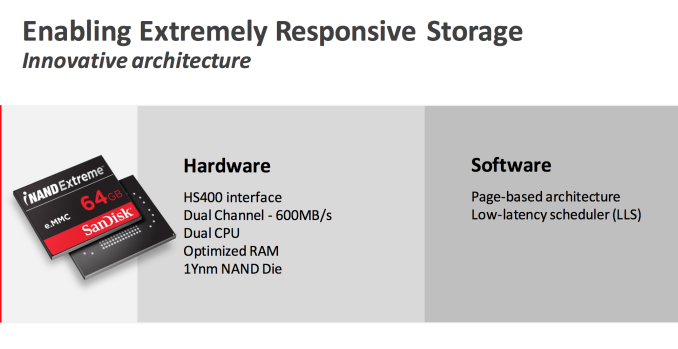
We're once again talking about a single-chip eMMC+NAND solution, but one that's much faster than previous incarnations. All implementations use SanDisk's own 1Y nm 2-bit-per-cell MLC NAND. In the new iNAND Extreme, SanDisk moves to a dual-CPU (one core for host operations and one for NAND management), dual-channel design. Multiple cores are common in high-end SSD controllers, so it's good to see mobile focused designs maturing to the same point.
The new iNAND Extreme implements eMMC 5.0 with a 400MB/s host interface. Internal to the design however are two 300MB/s channels connecting the controller and NAND. The bandwidth mismatch is designed to allow the device to work quicker internally to hide garbage collection and other cleanup latencies from the end user.
The old iNAND Extreme, much like most of the other eMMC solutions on the market today, was designed with a block based mapping architecture optimized for high sequential performance but low random IO performance. With the new iNAND Extreme, SanDisk moves to a page mapped architecture that has a significant impact on random IO performance as you can see in the table below. SanDisk does a pretty good job of dirtying its drives before running performance tests. Each drive is filled multiple times and around 10% of the drive is kept clean to simulate a heavy, real world use case. If SanDisk's testing description is indeed accurate, then the numbers below should be representative of what you'd experience on your phone/tablet:
The new iNAND Extreme uses 64Gbit MLC NAND die and at launch will be available in 16GB, 32GB and 64GB variants. SanDisk will eventually follow up with a 128GB variant with a whopping 16 NAND die on a single package.SanDisk iNAND Extreme 2014 Update 16GB 32/64GB Random Read Performance 6K IOPS 6K IOPS Random Write Performance 3K IOPS 3K IOPS Sequential Read Performance 300MB/s 300MB/s Sequential Write Performance 40MB/s 80MB/s
Although the new iNAND Extreme has two NAND channels, it's possible to interleave requests to multiple die on each channel and thus we see a benefit to having more than 1 die per channel. Sequential read speeds are absolutely phenominal on the new iNAND Extreme. At 300MB/s we're not far off where full blown SATA SSDs were just a couple of years ago. Sequential write speeds have improved tremendously as well. At 80MB/s for the 32/64GB drive, we're talking about multiple times faster writes than what we see in leading phones/tablets today.
The big win is in the random IO performance. SanDisk tests with 4KB transfer sizes and at 3K IOPS we're talking about around 12MB/s of random write performance. While steady state random write performance on many eMMC solutions in use today isn't much better than a high end 3.5" hard drive, the new iNAND Extreme should manage to deliver an order of magnitude better performance. Random read performance is also great.
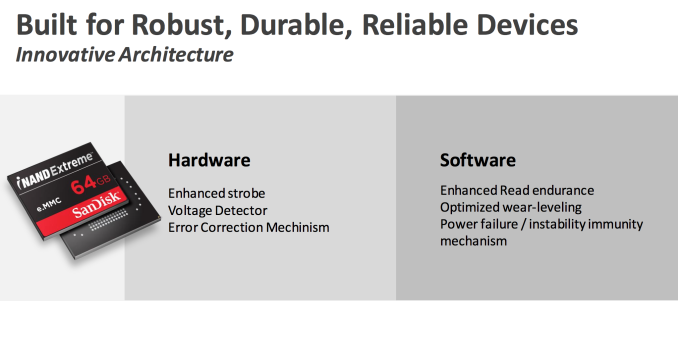
I've seen SanDisk's iNAND solutions used in Chromebooks before. It's not clear to me what's kept it out of a lot of the phones we typically review. I am also very curious about the power consumption, but SanDisk is aiming for everything from high end smartphones and tablets to notebooks with the iNAND Extreme so it had better be fairly low power.

Needless to say I'm extremely excited to see an eMMC solution offer this level of performance. We've seen tremendous progress on CPU, GPU and connectivity fronts in mobile over the past few years, it's about time we saw the same with storage.
More...
-
02-24-14, 01:31 AM #3658
Anandtech: ZTE Announces Use of Qualcomm CMOS PA as March Towards RF360 Continues
Today at MWC Qualcomm announced ZTE will be the first smartphone customer to ship with Qualcomm's CMOS Power Amplifier, a part of its RF360 front end solution. This is a very big deal. We somehow missed covering the RF360 announcement in great detail last year, so I'm going to quickly recap it here first.
We often talk about two major parts of the cellular connectivity story in our reviews: the cellular modem and transceiver. The diagram below does a good job of illustrating the chain:
In front of the transceiver you have antennas, switches, band filters and power amplifiers. Each band you need to support has a filter, power amp (PA) and antenna switch. In the old days it was one PA per band but now you can have multiple bands handled by a single PA. All of these components consume power and take up board area. More importantly, as you want to support more bands in a single device you need to scale up the number of switches, filters and PAs, which in turn consumes more board area. Larger PCBs lead to larger devices, which isn't always desirable.
Qualcomm's RF360 front end is an attempt to consolidate everything ahead of the transceiver in order to reduce power consumption, board area and enable support for more bands in a single device. While mobile operators may fight over limiting what bands are enabled on their devices, being able to support more in a given board area is incredibly useful from a manufacturing perspective. Smartphone vendors want to build as few SKUs as possible to service the world.
So what is Qualcomm's RF360? The front end is comprised of four parts: the QFE11xx Envelope Power Tracker, QFE15xx Dynamic Antenna Matching Tuner, QFE23xx Integrated Power Amp and Antenna Switch, and QFE27xx RF PoP.
The envelope tracker (QFE1100) was deployed in Samsung's Galaxy Note 3, Nexus 5, and in an APT (Average Power Tracker) mode in the LG G2 (QFE1101), and helps reduce power consumption/thermal footprint by dynamically varying voltage across the PA depending on the waveform of the transmitted signal (instead of leaving it as a fixed value).
The dynamic antenna matching tuner showed up in Nokia's Lumia 1520 and actively tunes attached antennas depending on current conditions. The next piece of the RF360 puzzle is the QFE23xx power amp. This is a 28nm power amp built in CMOS at a 28nm process, which moves conventional front end analog circuitry into a smaller, scalable CMOS package. The CMOS power amp needed quite a bit of validation/field verification testing, which contributed to a fairly long time to market. Today Qualcomm announced that ZTE is its first partner to design in its QFE23xx CMOS power amps with the new Grand S II LTE.
ZTE uses two Qualcomm CMOS power amps in its design (QFE2320, QFE2340), in addition to Qualcomm's QFE1100 envelope tracker.
The last piece of the RF360 puzzle is the QFE27xx RF PoP. This is a package-on-package design that takes the CMOS power amps, and moves the band filters off of the PCB and onto the power amp itself, thereby reducing board space. Qualcomm expects to see the first full RF360 implementation in a smartphone later this year (likely about a quarter after today's announcements).
The benefits are obvious. Reducing board area and power consumption has a direct impact on the size, weight and battery life of a device. Smaller PCBs can be leveraged to either build smaller devices, or support more bands while keeping the device size the same. It's wonderful to see Qualcomm being more aggressive in talking about its connectivity wins, and I'm very excited to see that RF360 is nearly completely here. This is a very big deal.
More...
-
02-24-14, 01:31 AM #3659
Anandtech: Snapdragon 610 & 615: Qualcomm Continues Down its 64-bit Warpath with 4/8-
The unexpected arrival of Apple's first 64-bit ARMv8 core (codename: Cyclone) at the end of last year forced a transition to 64-bit sooner than expected. Silicon vendors keep telling me that both quad-core and 64-bit support are now borderline requirements for customers in China. I'm still skeptical that the Chinese market wouldn't respond just as well to a really well designed, high performance dual-core 32-bit SoC, but since there isn't one on the market we'll never really find out.
In order to quickly respond to market demand for 64-bit and tons of cores, Qualcomm is bringing ARM's own IP higher up the product stack into the new Snapdragon 610 and 615. Both SoCs are being announced at MWC, with shipments to customers in Q3 and the first devices hitting the market sometime in Q4 of this year.
The Snapdragon 610 and 615 are four and eight core implementations of ARM's Cortex A53, combined with Qualcomm's Adreno 405 GPU and the company's own 9x25 derived Category 4 LTE modem. The SoCs are built on a 28nm LP process, like the Snapdragon 410. The two new SoCs are also pin compatible with the Snapdragon 410, offering phone vendors an easy way of designing a higher performance version of a 410 platform.
That's the high level take, now let's dig a bit deeper.
New to the Roadmap: 64-bit and Octa-core
Like the Snapdragon 410, both the 610 and 615 use ARM's 64-bit Cortex A53 CPU IP. The main difference between the two SoCs is the number of cores. The 610 features four Cortex A53s, while the Snapdragon 615 features eight. Qualcomm readily admits that the Snapdragon 615 exists almost entirely because of the China market. I really do wonder if both the 610 and 615 have eight CPU cores with four fused off to make a 610, as creating two separate masks/die at this price point may not make a ton of sense.
I briefly went over the architecture of ARM's Cortex A53 in my post on the Snapdragon 410. In short, it's a 64-bit ARMv8 Cortex A7 on steroids. ARM views the Cortex A53 as the absolute furthest you can push a dual-issue, in-order microprocessor. It's going to make for an excellent performer in the mainstream.Qualcomm's Growing 64-bit SoC Lineup Marketing Name Snapdragon 615 Snapdragon 610 Snapdragon 410 Internal Model Number MSM8936 MSM8939 MSM8916 Manufacturing Process 28nm LP 28nm LP 28nm LP CPU 8 x ARM Cortex A53 4 x ARM Cortex A53 4 x ARM Cortex A53 1.2GHz+ ISA 32/64-bit ARMv8 32/64-bit ARMv8 32/64-bit ARMv8 GPU Qualcomm Adreno 405 Qualcomm Adreno 405 Qualcomm Adreno 306 H.265 Decode Yes Yes No Memory Interface 1 x 64-bit LPDDR2/3 1 x 64-bit LPDDR2/3 1 x 64-bit LPDDR2/3 Integrated Modem 9x25 core, LTE Category 4, DC-HSPA+, DS-DA 9x25 core, LTE Category 4, DC-HSPA+, DS-DA 9x25 core, LTE Category 4, DC-HSPA+, DS-DA Integrated WiFi Qualcomm VIVE 802.11ac Qualcomm VIVE 802.11ac Qualcomm VIVE 802.11ac eMMC Interface 4.5 4.5 4.5
Both SoCs are built on a 28nm LP process. The 8-core Snapdragon 615 is made up of two quad-core clusters, each optimized for a different operating point. One cluster is optimized for low power operation while the other cluster is optimized for high performance. This will likely manifest in four cores being able to run at a higher frequency than the other four, although Qualcomm tells me that all eight cores can be operational at the same time should a workload demand it. More likely than not we'll see situations where you have either the low power or high performance cluster operational, and not both. There simply aren't many (any?) normal use cases where you need 8 active cores.
This dual-cluster approach should sound a lot like NVIDIA's 4+1 architecture. While the Snapdragon 615 meets the core count requirements for success in China, it also offers a bit more dynamic range for regular users as well.
I do have to point out that the Snapdragon 615 violates Anand Chandrasekher's Things that are Dumb list, but again it seems like Qualcomm is simply doing what the Chinese OEMs want. I could have a longer discussion about whether or not it's smart to listen to your customers if they are leading you astray, but let's see how this one pans out once Qualcomm shifts back over to its own CPU core IP next year.
The big upgrade over the Snapdragon 410 actually comes on the GPU side as both the 610/615 integrate Qualcomm's Adreno 405 GPU. It's unclear how Adreno 405 compares, performance-wise, to Adreno 420 in the Snapdragon 805 but we do see a substantial feature set increase with the move to a 4xx GPU. Qualcomm's Adreno 400 GPU family is designed in house and brings a D3D11-class feature set to Qualcomm's mobile SoCs. There's support for hardware tessellation, DirectX 11.2, OpenGL ES 3.0 and full profile OpenCL 1.2.
I don't have many details about the ISP, but Qualcomm tells me to think of the 610/615 as bringing features down from the Snapdragon 800 family rather than bringing features up from the 410. The 610/615 also add hardware HEVC/H.265 decode acceleration.
The Snapdragon 410, 610 and 615 all have the same pinout, which implies that they all have the same 64-bit LPDDR2/LPDDR3 memory interface.
Connectivity and Conclusion
On the modem front all three 64-bit SoCs integrate Qualcomm's 3rd generation LTE, basically a derivative of the 9x25 core that we've seen used for a while now. There's support for Category 4 LTE and optional Carrier Aggregation. The new 610/615 are compatible with Qualcomm's RF360 front end, which we expect to see fully deployed and available in a device by the end of the year. Continuing with Qualcomm's tradition, the new SoCs also integrate its 802.11ac WiFi.
Given Qualcomm's very public statement against 8-core mobile CPUs back in August of 2013, I can only assume that the 8-core Snapdragon 615 is a very new addition to the roadmap. I do wonder what might've filled this space had Apple not released the A7 when it did. I also wonder what the 64-bit successor to the Snapdragon 805 will be. It's too early for Cortex A57 but I wouldn't rule that out for a future 800 series Snapdragon SoC.
The Snapdragon 610 and 615 appear to fulfill Qualcomm's desires for bringing 64-bit designs to market as quickly as possible, as well as the need to compete in the core count race in China. I don't agree with either philosophy, but I'm also not tasked with selling SoCs on a global scale - perhaps this is the only way. It also highlights a serious weakness in ARM's roadmap: anyone looking to build a 64-bit performance mainstream SoC is forced into tons of low power cores rather than fewer, higher IPC cores. We need a 64-bit version of the Cortex A17.
I do wonder how the Cortex A53 will measure up to Krait 300. The latter isn't incredibly out-of-order, but it can run at relatively high frequencies. Since we're talking about 28nm LP designs, I'm not expecting super high frequencies out of Cortex A53. This may be one of the few times in recent history where we get to pit ARM's own design against a similar, competing solution from Qualcomm.
Moving the needle on graphics is important and it's good to see quick progress on that front. I suspect both of these SoCs will make for good midrange devices.
More...
-
02-24-14, 02:03 AM #3660
Anandtech: Sony Launches Xperia Z2, Z2 Tablet, and M2 at MWC 2014
Sony has just announced the Xperia Z2, which is the direct successor to the Xperia Z1 that released in the fall. While quite a bit stays the same, there’s also quite a bit that has changed. I’ve listed the differences below:
While there’s plenty of other things mentioned in the press release, much of it is the standard fluff and fanfare that most press releases come with. Ultimately, the differences come down to the spec sheet, and the Xperia Z2 has few notable changes from the Xperia Z1. Battery gets larger to compensate for the larger display, Sony added the ability to record in 4K/30p, the SoC is a minor bump from improved yields, RAM goes up to compete with Samsung’s Note 3 and presumably a future Galaxy S phone as well.Sony Xperia Z1 Sony Xperia Z2 Display 5”, 1080p “Triluminos” display 5.2”, 1080p “Triluminos” display Video Recording 1080p 2160p/4K SoC MSM8974, 2.15 GHz Snapdragon 800 MSM8974AB 2.26GHz Snapdragon 801 RAM 2 GB 3GB Speakers Single speaker, downward-facing Stereo speakers, front-facing “S-Force Front Surround” Battery 3000 mAh, 3.8V, 11.4 WHr 3200 mAh, 3.8V, 12.16 WHr
While I will admit that I haven’t properly used either Xperia Z1/Z2, I do have a good idea of the various issues that seem to be consistently repeated by Sony in their Xperia lineup. Probably the biggest question that I have is whether the Xperia Z2 truly has a better display than the Xperia Z1. While the press release talks about how “TRILUMINOS Display for mobile with brand new Live Colour LED uses red & green phosphor with blue LEDs and customised colour filters to produce a brighter and more uniform light. The result is richer colours on the screen for all of your smartphone viewing without the risk of saturation,” I am skeptical that this actually translates to better display. While it’s too early to judge whether display has truly changed from the Z1’s display with poor calibration and worse viewing angles, initially it seems that nothing significant has changed.
What can be talked about is the MSM8974AB, a SoC that was already outed by Xiaomi with their Mi-3. The differences are minor, far smaller than that of the APQ8064 and APQ8064AB/AC, which had slightly improved IPC and higher clocks. The 8974AB instead brings higher GPU clocks (550 MHz vs 450 MHz), higher memory clocks (933 MHz vs 800 MHz), and the ISP goes from 320 MHz to 465 MHz. This is almost guaranteed to be the SoC of choice for all high end flagships launching at MWC, judging by various rumblings about the internet.
The final change of note in the Xperia Z2 are the stereo front facing speakers, which are finally in a phone that doesn’t start with One or Butterfly in the model name. While there aren’t many details on the quality of the speakers, just putting them on the front is great. However, just like with HTC devices, it seems that the speakers have added a great deal of bezel to the front of the device. While some may not mind the difference, there are definitely a great deal of people that voice their complaints over the size of bezels in phones.
Outside of hardware, it should be noted that Sony is advertising a “built-in noise cancelation feature with certain earbuds. These would use two microphones located on the earbuds and leverage the smartphone for the noise cancelation processing.
Following up Sony’s launch of the Xperia Z2, they’ve also launched the Xperia Z2 tablet, which fits the name well, as it is effectively has the same internals as the Xperia Z2, only made into a tablet, which means removing the data/voice modem for the Wi-Fi variant, increasing the screen size to 10.1”, and changing the camera from the 20.7MP, 1/2.3” sensor found in the Xperia Z2 to an 8.1MP unit on the back, likely of either 1/4” or 1/3” format. There are some changes to battery size, thickness, and weight, but everything else is carried over, such as the FHD Triluminos display, IP55/58 rating and the front-facing stereo speakers.
The rest of the specs and the press release can be seen below:
Finally, Sony launched the Xperia M2, a mid-range device that seems to directly target the Moto G based upon its platform and spec. I say this because the SoC is the Snapdragon 400 with quad core Cortex A7s at 1.2 GHz. The one major difference is that this phone has LTE. This means that it’s probably the MSM8926 running inside, unless Sony is packaging a separate modem to enable LTE, which is rather unlikely. Of course, specs always form the foundation of experience for a device, which can be seen belowSony Xperia Z2 Tablet Display 10.1”, 1080p “Triluminos” display SoC MSM8974AB, 2.26 GHz Snapdragon 801 RAM 3 GB Rear Camera 8.1MP, Exmor RS for Mobile Front Camera 2.2MP Thickness 6.4mm Mass 426g (Wi-Fi), 439g (LTE/3G)
 Sony Xperia M2
Sony Xperia M2
Sony Xperia M2 Moto G Display 4.8" qHD 4.5" 720p SoC MSM8926, Quad Core 1.2 GHz Cortex A7 MSM8226, Quad Core 1.2 GHz Cortex A7 RAM 1 GB 1 GB Rear Camera 8MP, Exmor RS for Mobile 5MP Storage 8 GB 8/16 GB Thickness 8.6mm 6-11.6mm This is an interesting device because it’s not a simple refresh. The display is likely to not be competitive with the Moto G unless its calibration is much better, but Sony has also introduced LTE into their device. The camera could be noticeably better, as the 5MP camera in the Moto G is certainly not targeted at anyone that intends to use their phone as a primary camera of any kind. The Xperia M2 also has a dual-SIM variant, although that device won’t have LTE. While the press release doesn’t have any indication of whether or not the Xperia M2 will have microSD, it should be a relatively safe bet to say that it will, based upon Sony’s continued inclusion of microSD even at the high end of the market. Overall, depending upon price, this will be competitive with the Moto G, as they trade blows in specifications.
More...
Thread Information
Users Browsing this Thread
There are currently 25 users browsing this thread. (0 members and 25 guests)






 Quote
Quote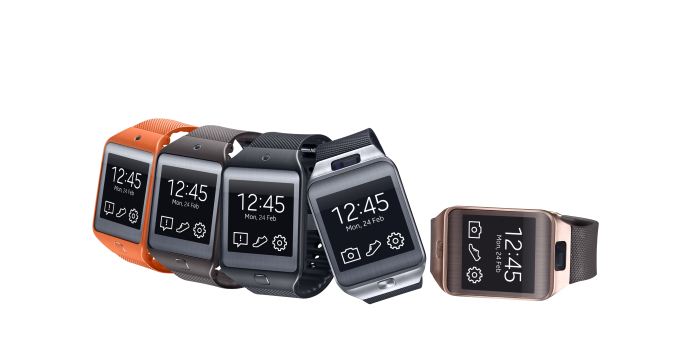
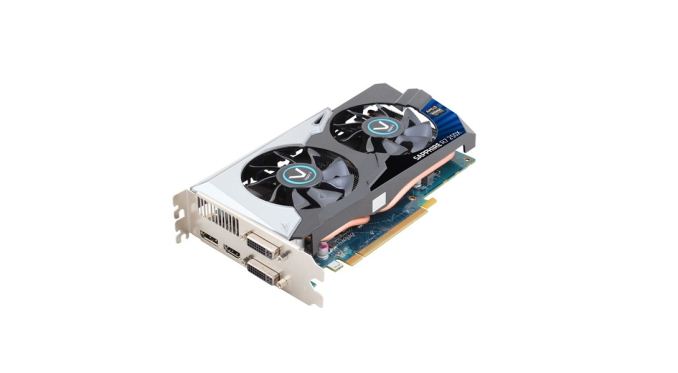


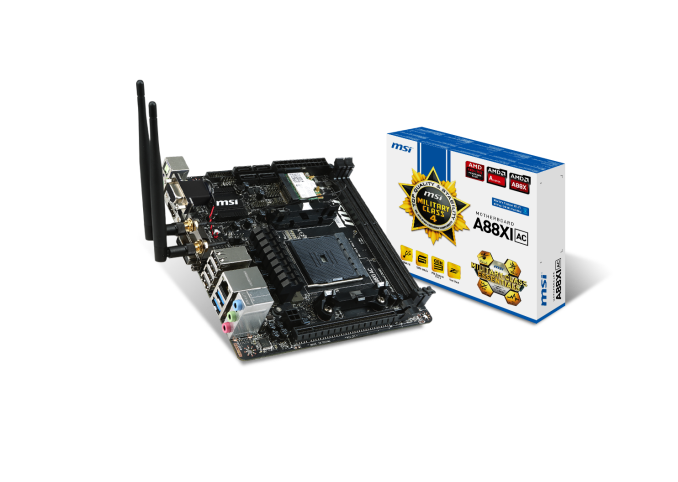


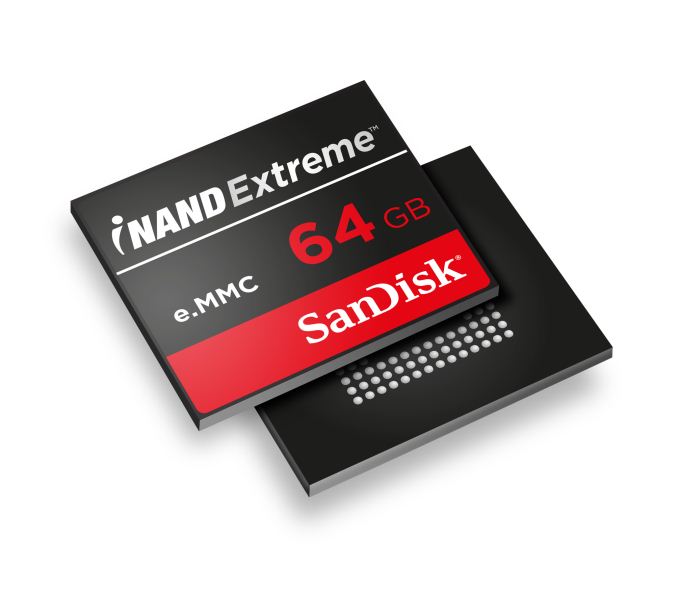

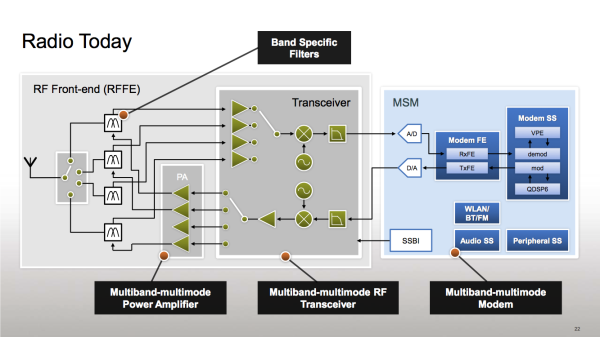
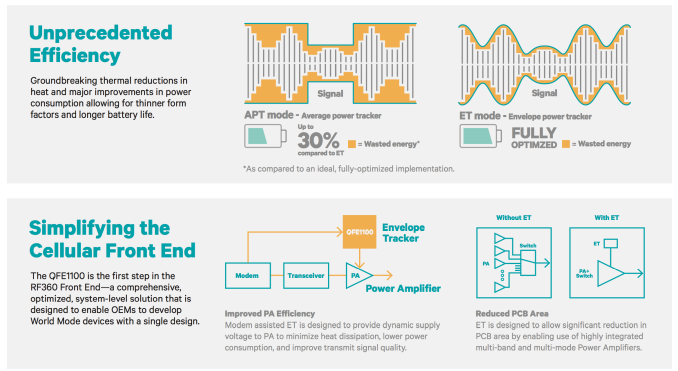
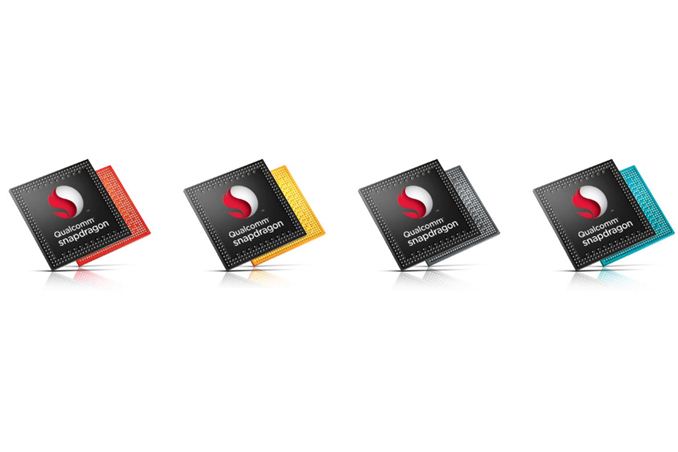


















Bookmarks